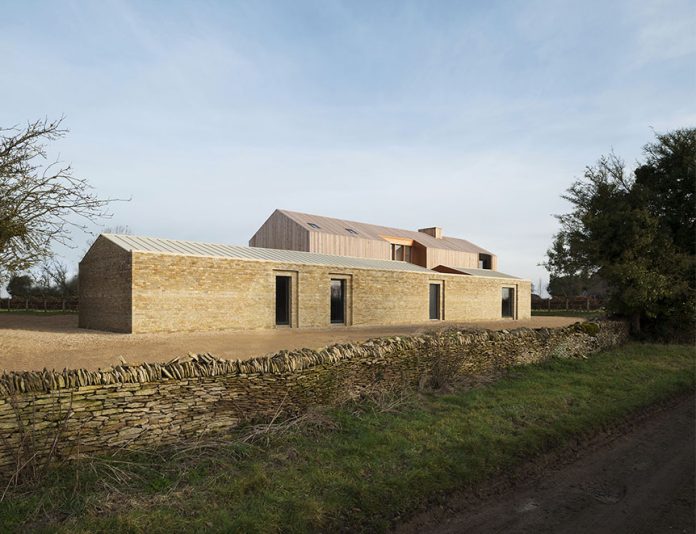Project Name: Long House
Architects: Bureau de Change
Area: 500 m2
Year: 2019
Photographs: Gilbert McCarragher
About Bureau de Change Architects
Bureau de Change was founded by Katerina Dionysopoulou and Billy Mavropoulos. The architecture firm is an award-winning practice. At the core of their work, one can find the founders’ upbringing, passions and experiences, all these values being combined with the pragmatism and formality of their architectural training with a desire to bring a sense of theatre, playfulness and innovation to the design of spaces, products and environments. Rigorous thinking and analysis are brought to life through prototyping, testing and making in the Bureau de Change studio.
Long House in Cotswolds
Text provided by the architects.
In order to create a new home using interlocking barn forms and a palette of local materials, Bureau de Change has reinterpreted the rural vernacular in the Cotswolds.
Billy Mavropoulos, Co-Founder of Bureau de Change, explains how the design drew on traces of the site’s former use: ‘We took the elongated forms of two 30 meter-long, timber chicken sheds as the starting point for the new design. The house then became a play of traditional barn volumes which have been pushed and pulled to suit the needs of the client.’
The front volume has been cut into to create an internal patio, hidden behind the elevation. The back volume is extruded to double height, creating a point of interest where the two barns interlock and are pushed into one another. A building within a building allows the far end of the front barn to house a studio for the artist owner, and a part of the second volume has been broken off to form an annex adjacent to the main house.
The focal point of the house is represented by the key living spaces fan out around the patio. The Patio is clad in copper and it is the space where both nature and light are introduced.
Great attention to craft and detail
Bureau de Change’s attention to craft and detail is materially echoed through the entire house. In order to generate a language which both revives and reinterprets the vernacular, the firm paid great attention to local historic building practices and approaches to material
In addition, the construction meets passive house principles – with an insulated concrete formwork system creating a thermal envelope, limited openings on the south-facing façade, triple glazed window units and a heat recovery ventilation system to maintain air quality year-round.
The front barn has been built in dry stone wall by a local craftsman
Co-Founder Katerina Dionysopoulou explains: “The front barn has been built in dry stone wall by a local craftsman, chosen not only for its local relevance but for its inherent qualities of mass and muscularity. This façade is monolithic, with fewer openings to produce a heavier, solid volume at the front. As a counterpoint, the taller barn at the back is clad in a lighter-weight natural larch which has been charred to a deep leathery black at each window recess. This charring has then been brushed away to gently blend it into the natural larch – creating an ombré effect that emphasizes the rhythmic push and pull of the window indentations.”
The texture and interest are expressed through this sensitive material treatment deconstruct the expansive façade. The studio has envisaged a slow process of weathering and age that will further embed the new home into its rural setting in both material choices.






